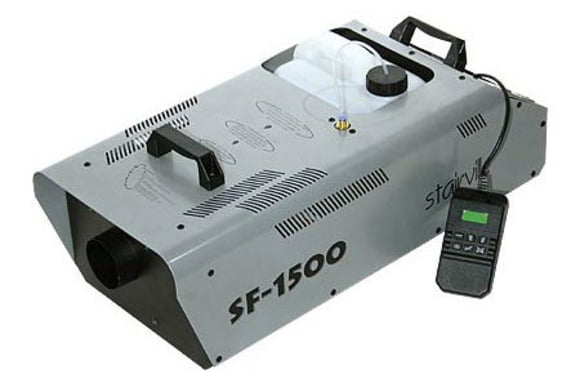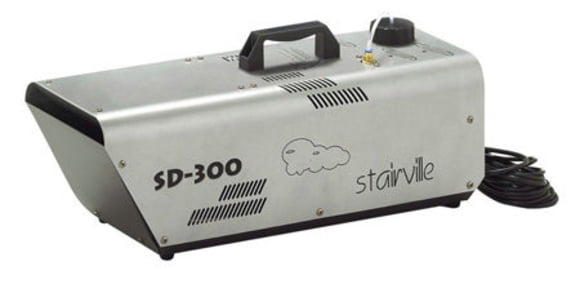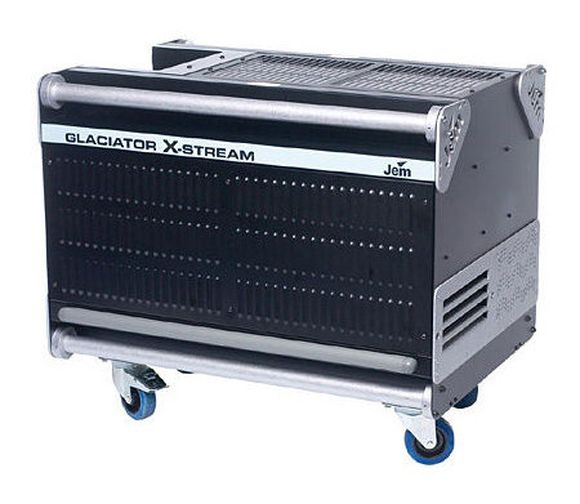4. A brief typology
Not all fog machines are equal unto each other
In principle, there are three different types in common use:
| Classic fog machines |
| Hazers and fazers |
| Ground fog machines |
In classic fog machines, water-based fog fluids arer vaporised using a heat exchanger. The resulting tiny doplets are then ejected from the nozzle at the heead of the machine.
Fog machines create clouds of fog, which dissipate over time. They are very useful in enhancing lighting effects.

Fog machine
In contrast to classic fog machines, hazers create a very fine haze which ideally is almost invisible and only serves to enhance the effects of the light show. Hazers vaporise using ultrasound and therefore require special fluids.
The output of these haze machines tends to be extremely strong and long-lasting; they are frequently used for large-scale events, too.

Hazer
While fazers are in the same category of haze producing machines, they are in fact regular fog machines with a less powerfulo output of fog that is then dispersed by a ventilator in front of the nozzle, resulting in less dense fog.
The advantage is that regular fog fluid can be used, but these machines are usually not powerful enough to create the desired effect on large stages.
Ground fog machines basically operate on the same principle as regular fog machines.
However, the fog is rapidly cooled down by an inbuilt cooling element (budget machines simply use ice cubes), which makes it sink to and move across the stage floor.
This effect is sustained only with upper-mid range and premium machines, whereas with budget devices the fog tends to rise after a few metres.

Ground fog machine




